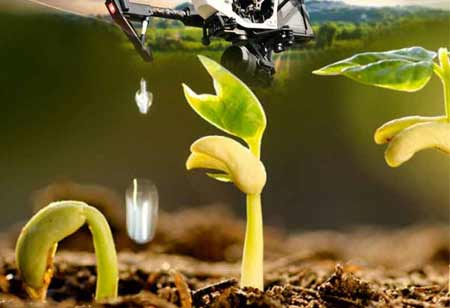Thank you for Subscribing to Agri Business Review Weekly Brief
Different Types & Crop Rotation of Arable Crops
Arable farming is a procedure of crop production that produces a wide range of annual crops.

By
Agri Business Review | Monday, September 05, 2022
Stay ahead of the industry with exclusive feature stories on the top companies, expert insights and the latest news delivered straight to your inbox. Subscribe today.
Arable farming is a crop production system incorporating different varieties of crops from foliage crops
FREMONT, CA: Arable farming is a procedure of crop production that produces a wide range of annual crops. Then this indicates that the crop life cycle, from germination to seed production, is complete within one year. Based on the type of use, there are different Arable crops. These include;
• Grain crops – These cultivated crops are grasses and millets grown for their edible starchy grains, such as Wheat, Maize, Rice, Barley, and Proso millet.
• Pulse crops; comestible seeds from the legume family, high in protein, for instance, lentils, beans, and peas
• Oilseed crops; are grown for the oil extraction from the seeds, for instance, Rapeseed, Soybean, and Sunflower.
• Forage crops; crops employed for animal feed, fresh or preserved like cowpea, clovers, and timothy
• Fiber crops; crops are cultivated for fiber yields like cotton, jute, and flax.
• Tuber crops are those whose edible portions are short, thickened underground stem-like potato and elephant yam.
Arable crop farming is the systematic use of land to cultivate different crops. If there is a persistent supply of their precious produce, farmers watch how fertile their land is and then follow a preparation after the previous year’s harvest.
Several Arable farms practice monoculture, or only growing 1 or 2 crops since this is specialized in a specific crop to turn more productive. The crops grown differ by region of the world. Based on the crop, it can incorporate plows, sprayers, choppers, cultivators, or other types of equipment. Large areas of land are ingrained and then harvested once in Arable farming.
Crop Rotations in Arable Farming
Crop rotations aid in building soil fertility and fulfill the nutritional requirements for crop growth. Additionally, they help to limit the spread of diseases, control weeds and break pest lifecycles. For some soil-borne diseases, crop rotations with an adequate break between susceptible crops are the only effective control.
Normally, the following principles must be applied when planning a crop rotation;
• Shallow-rooted crops track deep-rooted crops
• High root-mass crops track low root-mass crops
• Weed-susceptible crops follow weed-suppressing crops
• Nitrogen-demanding crops follow nitrogen-fixing crops.
Many rotations include using green manures to help build soil fertility, provide cover and prevent nutrient leaching.





